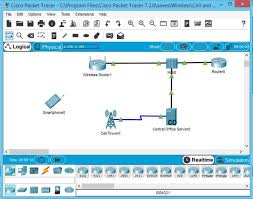Course DetailsHome / Courses Details
Cisco Packet Tracer
This Cisco Packet Tracer training course is designed to provide learners with hands-on experience in network design, configuration, and troubleshooting using Cisco’s powerful network simulation tool. Participants will gain practical knowledge of networking concepts, device configurations, and protocols in a virtual environment that mimics real-world networking scenarios.
The course covers essential networking topics, including basic device setup, IP addressing, VLANs, routing protocols, and network security. By the end of the training, participants will be able to design, implement, and troubleshoot networks efficiently, making it an ideal course for students, aspiring network engineers, and IT professionals preparing for Cisco certifications like CCNA.

Module 1: Introduction to Cisco Packet Tracer
-
Overview of Cisco Packet Tracer and its features
-
Installing and setting up Cisco Packet Tracer
-
Navigating the interface and basic tools
-
Understanding network simulation and real-time mode
Module 2: Basic Network Concepts & Device Configuration
-
Understanding network topology and network types
-
Connecting devices (PCs, switches, routers) in Packet Tracer
-
Basic device configuration using CLI (Command Line Interface)
-
Assigning IP addresses and subnet masks
-
Verifying connectivity using ping and tracert commands
Module 3: Switching & VLAN Configuration
-
Understanding switches and their role in networks
-
Configuring VLANs and VLAN trunking
-
Inter-VLAN routing using Layer 3 switches
-
Implementing Spanning Tree Protocol (STP) to prevent loops
-
Verifying and troubleshooting VLAN configurations
Module 4: Routing Fundamentals & Configuration
-
Understanding routing and how it works
-
Configuring static routes and default routes
-
Implementing Dynamic Routing Protocols (RIP, OSPF, EIGRP)
-
Configuring and verifying routing tables
-
Troubleshooting routing issues
Module 5: IP Addressing, Subnetting & NAT
-
Understanding IPv4 and IPv6 addressing
-
Implementing subnetting and supernetting
-
Configuring Network Address Translation (NAT)
-
Testing network connectivity with NAT
Module 6: Network Security & Access Control
-
Understanding network security concepts
-
Configuring Access Control Lists (ACLs)
-
Implementing Port Security on switches
-
Introduction to firewall concepts and securing network traffic
Module 7: Wide Area Networks (WAN) & Wireless Networking
-
Understanding WAN concepts and technologies
-
Configuring PPP, HDLC, and Frame Relay
-
Introduction to VPNs and basic WAN security
-
Setting up and configuring Wireless LANs (WLANs) in Packet Tracer
Module 8: Network Troubleshooting & Simulation Exercises
-
Common network issues and troubleshooting methodologies
-
Using Packet Tracer tools for debugging and troubleshooting
-
Real-world simulation projects and case studies
Module 9: Final Project & Assessment
-
Designing and implementing a complete network
-
Configuring routers, switches, VLANs, and security policies
-
Troubleshooting and optimizing network performance
-
Final assessment and review
Duration: 4-6 weeks (customizable based on training needs)
Target Audience: Students, aspiring network engineers, IT professionals, CCNA candidates
Certification: Certificate of Completion provided after successful assessment
Would you like any modifications to tailor it to a specific audience or training goal?
Basic understanding of computer networks and networking concepts
Familiarity with IP addressing and subnetting (recommended but not required)
No prior experience with Cisco Packet Tracer is needed (beginners welcome)
